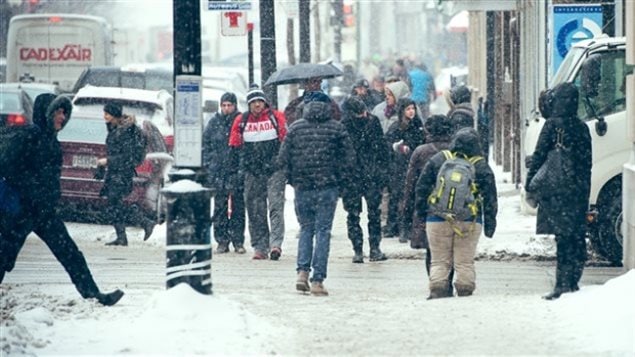Montreal sidewalks are notoriously treacherous, even more these days when precipitation from the skies appears to have as good a chance of being freezing rain as the snow that helped make the city famous.

That’s about to change, albeit not at the pace or scope that most Montrealers might hope for.
Beginning next year, construction of heated sidewalks will begin on Ste-Catherine St., the city’s most famous artery that runs through the heart of Montreal’s downtown business district.
Here’s the plan: tear up the pavement under a 670-metre stretch of Ste-Catherines, insert a network of garden-hose-sized tubes through which will flow a mixture of water and glycol warmed by an electric heater, repave.
If all goes well (never a sure thing with Montreal’s public works department), a second phase two years later will expand the heated sidewalks to 2.2 kilometres.
Total time: four years to complete.
Final objective: pavement heats to 3 C, warm enough to prevent snow from accumulating and ice from gathering.
Desired result: More Montrealers, especially older ones, will be able to go downtown shopping without risking fragile limbs or concussions brought on by ugly falls and tumbles.

Why did it take so long, you might wonder, when people in Scandinavia and Japan figured this one out years ago?
Cost has something to do with it, but likely so did vision.
Heck, if Josh Freed had not visited Scandinavia six years ago, it might never have happened at all.
Freed, a columnist for the Montreal Gazette and an award-winning documentary filmmaker, has promoted the idea since his northern European journey.
I spoke with Freed by phone on Monday at his Montreal home.
Listen






For reasons beyond our control, and for an undetermined period of time, our comment section is now closed. However, our social networks remain open to your contributions.